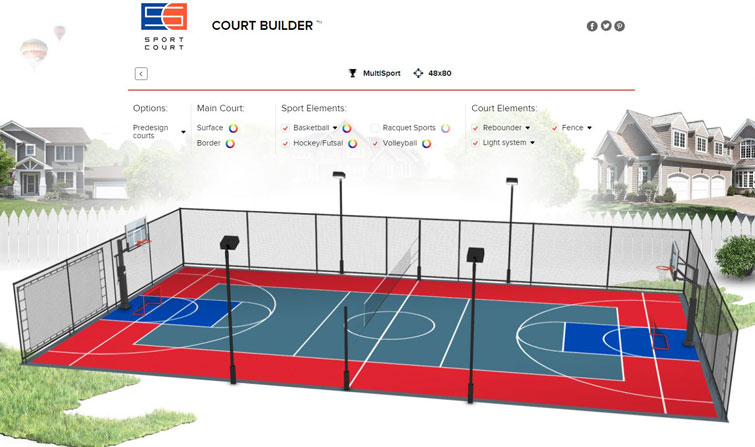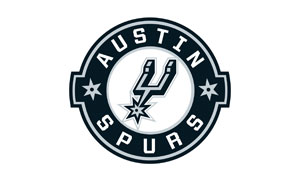Now you can hoop it up like the pros, whether you have room for a full-length court or just a three-point arc. Teach your kids the fundamentals, play a game or H-O-R-S-E, Around The World or practice your fade-away jumper. Who knew that house league would be possible at your own house?
Game Rules
Ball
Use an official ball, though any size will do. Consider using a smaller ball for smaller kids.
Court
There is no "standard" basketball court size, and most games can be played with a half-court, crossing the three-point line for each change in ball possession.
Scoring
Varies, depending on the game, but mostly two points for any shot except those "outside the arc," which usually count for three points. Some people count by "1's" and "2's" which puts a greater value on the long shots outside the arc.
Horse
The object of the game is to be the last player left in the game. Players are eliminated when they have all the letters of the word "HORSE." Players are penalized with a letter, beginning with H and proceeding to E, when they fail to make another shot that a previous player has made. Once a player has all the letters to spell HORSE, they are immediately removed from the game.
The game begins by deciding a turn order in which players will shoot the basketball. In later games the previous winner may choose the order, or it could be the order in which players were knocked out in the previous game.
The first shooter attempts to make a basket from anywhere on the court. If the shooter makes the shot, the next player must make the same shot. If the next player makes the shot as well, the third player must attempt to make the shot. If all players make the shot and the original shooter's turn comes up again, the original shooter choose a new spot from which to attempt a basket. If the original player misses his shot then the ball is passed to the second player who can attempt to make a basket from anywhere on the court.
Shots can be called such 'backboard', 'left-hand; (or 'off-hand'), hook-shot, etc., indicating not only from where but how the shot must be made. For example, if you call "backboard," you must bounce the ball off the backboard and into the net. If you swish it or don't hit the backboard, the shot is no good. Subsequent players must make the same shot to avoid a letter.
Feel free to add your own house rules to best suit your own court. For example, if the ball goes over the fence into the neighbor's backyard, the shooter takes three letters.
Around the World
Players begin the game by shooting in order from spots designated on the court. If a player makes spot #1, the player advances to spot #2. If the shot is missed, the player may "chance" it by calling out "Chance!". In a chance, the shooter has one additional try in which to make the shot. If the shot is made, the player advances to the next marked spot. If the shot is missed, the player's turn is over and he/she must start over at spot #1 when his/her turn comes up again.
If a player does not wish to "chance" a shot, his/her next turn resumes from the spot of the last made shot. Upon making spot #9, the player advances to the free throw line where (6) consecutive free throws must be made. Thus completing shots "Around the World".
The first player to go "Around the World" wins.
Two-on-One Cut Throat
Team with the ball always has one player. Team without the ball always has two players.
Player A takes the ball out and tries to score against Players B and C. If a shot is made, two (or three) points are awarded. Player A then goes to the free throw line for three free throws (each worth one point). If Player A makes all three free throws, he/she takes the ball out again.
If free throws are missed and Player B or C rebounds, then the game continues with that player going one-on-two. NOTE: Some versions of this game allow a player who makes a bucket to shoot free throws until he/she misses--no limit.
The first player scoring 21 points wins.
Spot Shot
Players take turn shooting five shots from each of six designated spots. The player with the best percentage after 30 spot shots wins.
One-on-One, Two-on-Two, Three-on-Three "Make It, Take It"
The game is played to 22 counting by two and three's and must be won by a margin of four points.
Team A takes the ball out to start the game. If Team A makes a basket, team B takes the ball out. Once a team has scored six points, they keep the ball after each basket (thus make it, take it) until the other team takes possession by rebound, foul or steal.
When one team scores the 20th point, this is considered "Game Point" and the opponent is given posession of the ball.
Twenty-One
Player A and Player B each have a basketball and stand behind a designated long shot line. On "go", players shoot one long and one short shot (short shot is a shot from anywhere). Long shots count as two points, short shots count as one point.
If a player makes a shot that brings the score to a total of 13 points, the player's score reverts back to zero and must start over again. The first player to score 21 points wins.
The game can also be played using one ball and alternating turns after a shot is missed.
Fifty-One
This game is played just like 21 except there are three (3) shots. Long shot from designated line = 3 points. Rebound shot from the spot that the long shot is rebounded = 2 points. Shot from anywhere = 2 points. the first player to 51 points wins.











